Search Results
Fine Jewelry University Articles matching: “ccc mean”
Showing only FJU Article results. Click here to show all results.
Fine Jewelry University (Show All FJU Articles)
-
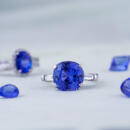
Gem in the Spotlight: Tanzanite
… low hardness and poor to fair toughness (and a property called cleavage, which is a tendency to break when struck) means that care should be taken to avoid sharp impacts. Setting it in earrings or a pendant will help protect it if the …-scale mines still operating, but their combined output doesn’t come close to that of the primary mine. All of this means that the scarcity of tanzanite is only expected to increase. So, should you get a piece of tanzanite jewelry? Our …
-
The Birthstones
…thoughts. Learn more about Amethyst March’s Birthstone: Aquamarine Originating its name from the Latin “aqua marina” meaning “sea water”, the aquamarine is a light blue to greenish blue beryl, most valuable when it’s a shade of darker … has been treasured for over 4,000 years. The name for the emerald is derived from the Greek word “smaragdos”, meaning green stone. Spring and green symbolized faith and fertility. The early Christians valued the emerald as a symbol of …
-
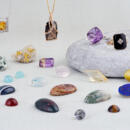
Gem in the Spotlight: Quartz
… of Quartz The microcrystalline varieties have a long tradition of being special to people. Microcrystalline means that the stone is made up of smaller crystals and not one big crystal. Sometimes you can see this structure with your naked…fairly hard gemstone that is resistant to scratching and chipping. It is also resistant to heat and chemicals, which means that it can withstand daily wear and tear very well. All quartz has the same refractive index at 1.54-1.55 and is …
-

How to Sell Jewelry on Craigslist and Facebook Marketplace
…Arden Jewelers for a free value appraisal of your jewelry. If you like our offer, you can get cash on the spot for your gold and jewelry. Our gemologist buyers are friendly and professional, and our 20+ year track record in Sacramento means you know you’re getting a great deal from a safe and reputable jeweler
-
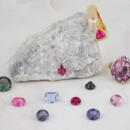
Gem in the Spotlight: Spinel
… used hundreds of years ago in early compasses. You may even know this gem by its more common name “lodestone” which meant “leading stone,” but you may not have known that lodestone is a form of spinel. Spinel is believed to possess … jewelry in the sense that it is only recently getting attention on its own and not just imitating other gems. This means that the prices are still relatively low for a stone of this durability, rarity, and beauty. Spinel can be just as …
-
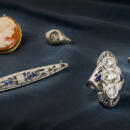
How to Value Inherited Jewelry
…more factors the seller may only find a buyer willing to pay $800. This does not change the jewelry value. It simply means that the current owner could only find a willing buyer at that price. So, how can we fairly determine how much a … estimates the price an item would sell to a used jewelry customer. The word “estate” in this context simply means used or pre-owned. When someone chooses to buy a piece of used jewelry, excluding cases of rare or highly sought after …
-
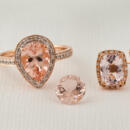
Gem in the Spotlight: Morganite
… dark the stone looks too saturated with color and loses its Morganite air. Compared with many other gemstones, Morganite is a relatively new addition with its first recorded discovery occurring in California in the early 1900s. This means you won’t find any tales of ancient kings wearing Morganite on their crowns or other such legends. Morganite’s lore and traditions are more focused on gem power. Morganite as a power gem is full of associations. Some believe it to be …
-

Laser Jewelry Repair
…what is a laser? LASER is an acronym for “Light Amplification by the Stimulated Emission of Radiation” which produces a sharp, focused light beam. The benefit of the laser is that very little heat is generated at the weld point. This means the heat will not damage the surrounding area. The jewelry’s intricate design and gems which are heat sensitive are safe from the heat with a laser. What type of metals can be laser welded? All the traditional metals can be laser …
-
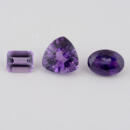
Gem in the Spotlight: Amethyst
…it a durable gemstone that is resistant to scratching and chipping. It is also resistant to heat and chemicals which means that it can withstand daily wear and tear. Amethyst has the same refractive index as other varieties of quartz at 1…of amethyst dates all the way back to ancient Greek mythology. The word “amethystos,” is derived from the Greek word meaning “not drunken.” It is said that amethyst was created when Dionysus, the god of wine, was angered by an insult from…